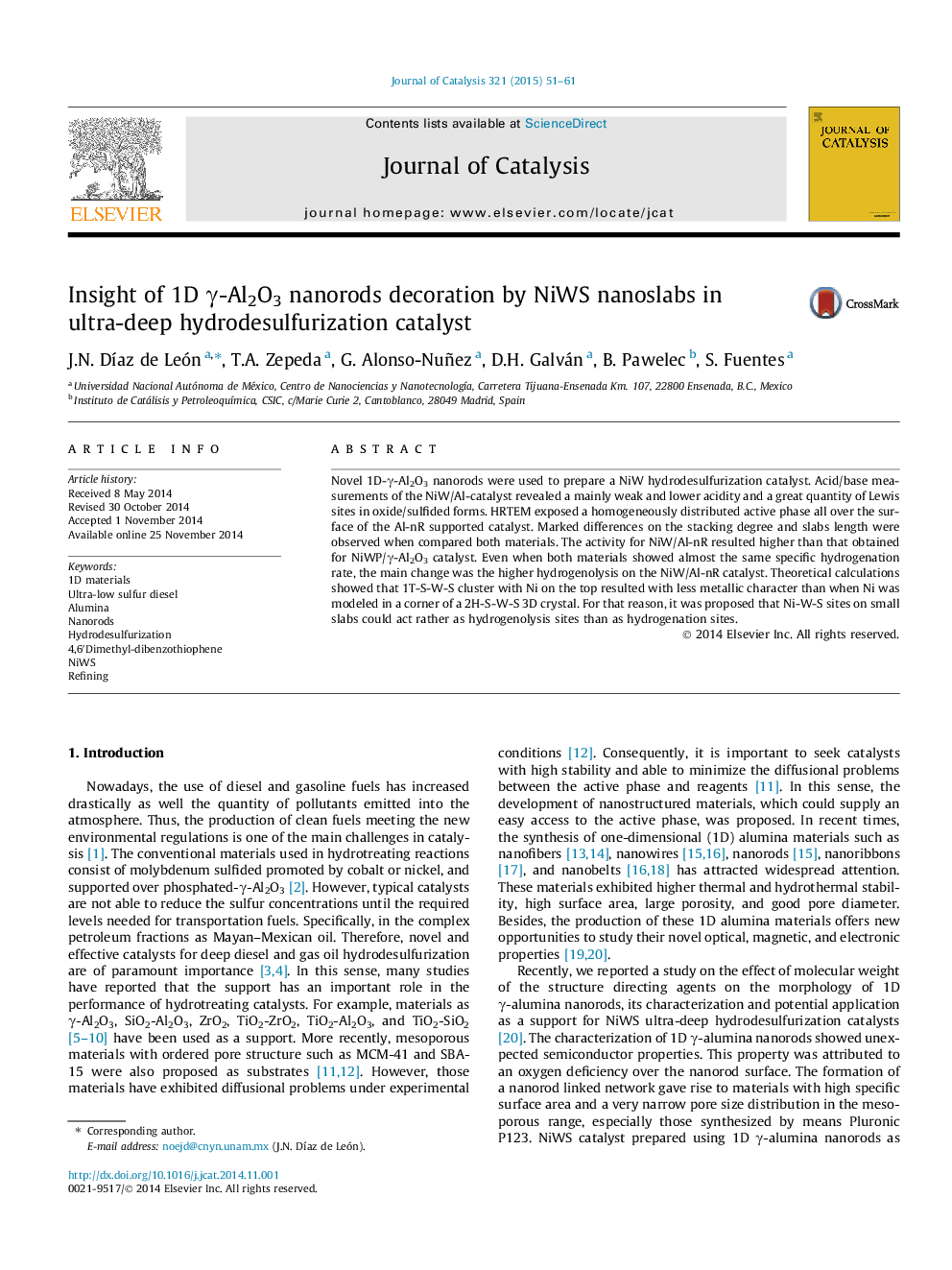| Article ID | Journal | Published Year | Pages | File Type |
|---|---|---|---|---|
| 60925 | Journal of Catalysis | 2015 | 11 Pages |
•1D-γ-Al2O3 nanorods were used to prepare a NiW hydrodesulfurization catalyst.•Highly distributed NiWS phases were located all over the alumina nanorods.•Ni-W-S sites could rather act as C–S bond hydrogenolysis.•NiWS type II nanoslabs in a tilted orientation were suggested.
Novel 1D-γ-Al2O3 nanorods were used to prepare a NiW hydrodesulfurization catalyst. Acid/base measurements of the NiW/Al-catalyst revealed a mainly weak and lower acidity and a great quantity of Lewis sites in oxide/sulfided forms. HRTEM exposed a homogeneously distributed active phase all over the surface of the Al-nR supported catalyst. Marked differences on the stacking degree and slabs length were observed when compared both materials. The activity for NiW/Al-nR resulted higher than that obtained for NiWP/γ-Al2O3 catalyst. Even when both materials showed almost the same specific hydrogenation rate, the main change was the higher hydrogenolysis on the NiW/Al-nR catalyst. Theoretical calculations showed that 1T-S-W-S cluster with Ni on the top resulted with less metallic character than when Ni was modeled in a corner of a 2H-S-W-S 3D crystal. For that reason, it was proposed that Ni-W-S sites on small slabs could act rather as hydrogenolysis sites than as hydrogenation sites.
Graphical abstractFigure optionsDownload full-size imageDownload high-quality image (151 K)Download as PowerPoint slide
